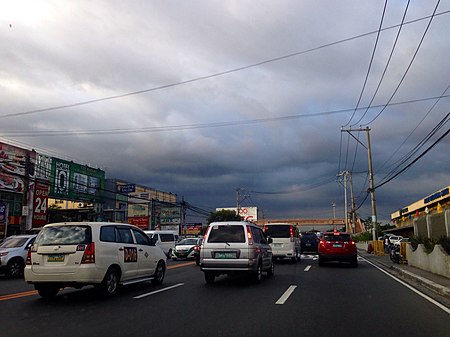Domestic Road

The Domestic Road, also known as the Domestic Airport Road, is a 1.171-kilometer (0.728 mi) major road in Pasay, Metro Manila, Philippines that links Andrews Avenue from the north to the NAIA Road in the south. It forms the short northwestern perimeter of Ninoy Aquino International Airport (NAIA) and its alignment is north–south running parallel to Roxas Boulevard and the NAIA Expressway located above Electrical Road to the west. It is named after NAIA Terminal 4, also known as Manila Domestic Airport, which is located along the road. Also located on this short road are the Cebu Pacific Airlines Operation Center, Airlink International Aviation School, Salem Commercial Complex and a Park N' Fly.
Excerpt from the Wikipedia article Domestic Road (License: CC BY-SA 3.0, Authors, Images).Domestic Road
Atayde Paz Street, Pasay Zone 20 (District 1)
Geographical coordinates (GPS) Address Nearby Places Show on map
Geographical coordinates (GPS)
| Latitude | Longitude |
|---|---|
| N 14.521944444444 ° | E 121.00055555556 ° |
Address
Atayde Paz Street
Atayde Paz Street
1301 Pasay, Zone 20 (District 1)
Philippines
Open on Google Maps








